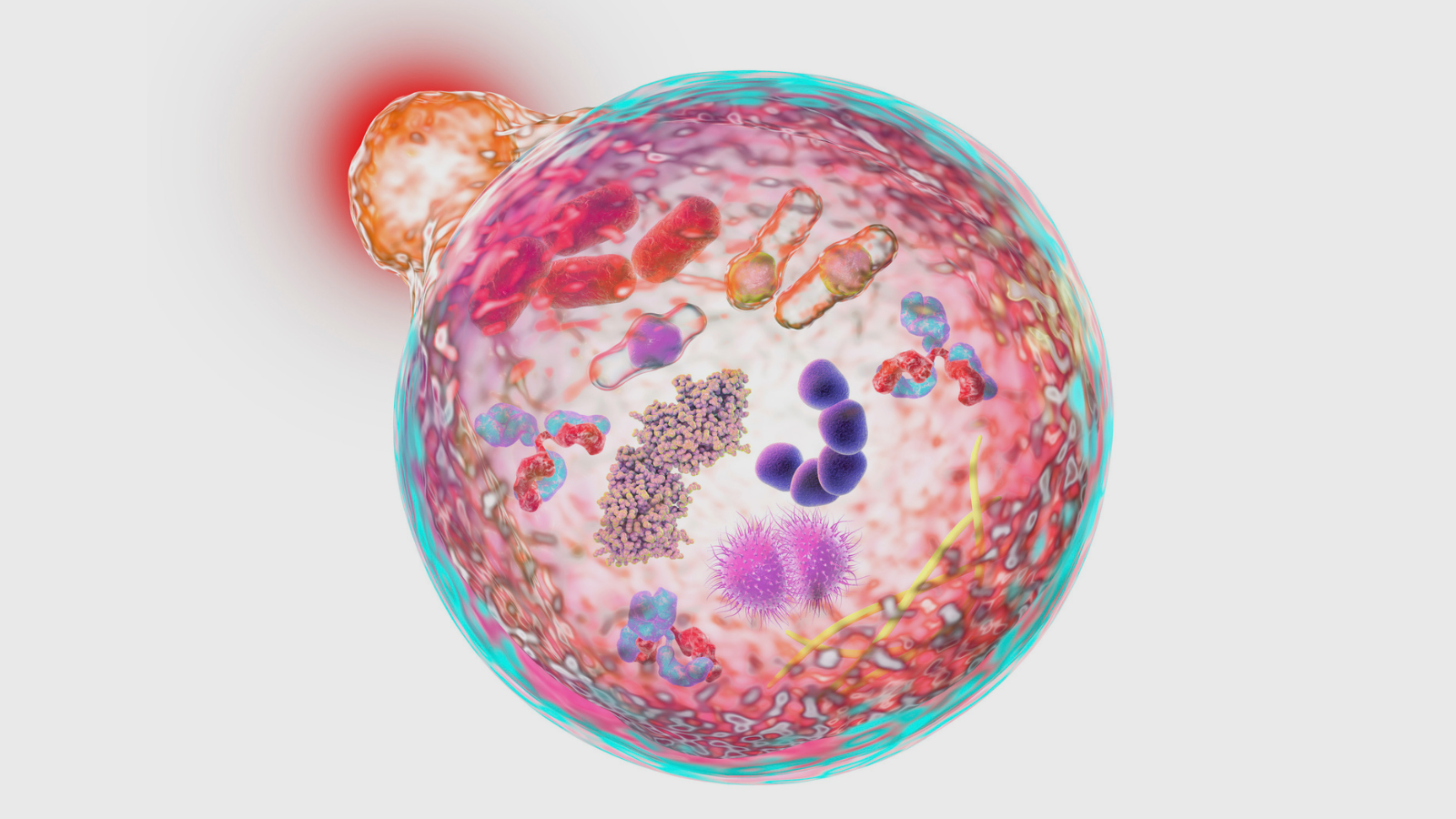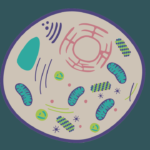Explore the incredible journey of autophagy, the cellular process that contributes to your overall well-being.

Autophagy is a Greek word that can be translated as “self-eating.” It’s a natural cellular process operating within our body cells. Inside the cell, it serves as the internal cleanup crew. Imagine our cells as factories that actively and continuously produce various molecules and structures to keep us functioning. Over time, some of these cellular components become old, damaged, or no longer necessary. This is where autophagy steps in.
Autophagy is like a careful quality control system within our cells. Its primary role is to identify these old or damaged components and then subsequently remove them. Doing so, it ensures that our cells remain efficient and healthy.
How autophagy works?
To understand how autophagy works, it’s essential to understand the key steps involved in this complex process:
Recognition: Autophagy initiates with the recognition of the cellular components that require clearance. These components include proteins, fats, and even whole organelles like mitochondria, the nucleus, and the endoplasmic reticulum. Irrespective of the components, they must first be marked for removal. This recognition entails attaching specific proteins to label these components for disposal. These labeled components are then prepared for the subsequent stages of autophagy.
Autophagosome formation: The marked components are enveloped by a double-membrane structure known as an autophagosome. The formation of this structure is critical. Any defect in its formation can disrupt the entire process. Autophagy encircles the targeted component and segregates it from the other healthy cellular components. It also acts as a protective barrier for the targeted contents during their transport.
Fusion with lysosome: The autophagosome then fuses with a cellular structure called the lysosome. Think of the lysosome as the cell’s recycling center. Inside the lysosome are enzymes that break down the contents of the autophagosome into reusable materials.
Recycling: Once broken down, the materials are then recycled. This marks the end of autophagy and provides the cell with valuable building blocks and energy sources.
What activates autophagy?
Autophagy doesn’t always happen at the same speed. It can be activated by a range of factors. Understanding what triggers autophagy can help us harness its benefits.
Nutrient deprivation: When we go without food or reduce our calorie intake, our cells kickstart autophagy. This is like a built-in survival mode, where cells recycle and reuse resources to cope with scarcity. Think of autophagy as the cell’s efficient cleaner, which makes sure that nothing gets wasted. When we fast or cut back on calories, it activates this cellular process and helps us promote better health.
Exercise: Physical activity can also activate autophagy. When we engage in exercise, our cells experience a unique kind of stress known as energetic stress. Imagine it as a workout for our cellular factories. The demand for energy skyrockets, and our cells must adapt quickly to meet this surge in demand. This is where autophagy comes into play.
Autophagy responds to the call of stress and recycles cellular contents so that cells can use them for energy production. This way, autophagy ensures that our cells efficiently cope with energy demand during physical activity and ultimately support our body’s well-being.
Related article: Is it true that exercise activates autophagy?
Other stress responses: Cellular stress, whether it’s caused by oxidative stress, damaged DNA, or other factors, can trigger autophagy. The cell perceives these stresses as threats and initiates autophagy to repair or remove damaged components that cause such stress.
The health benefits of autophagy
Now that we understand how autophagy works and what causes it, let’s explore its profound benefits for overall health:
Cellular health: Autophagy acts as a shield against cellular dysfunction by promoting the removal of damaged or malfunctioning cellular components. This minimizes the risk of cellular defects, which can lead to various diseases. Think of autophagy as a silent superhero quietly protecting our cells from harm and reducing the likelihood of associated health issues.
Longevity: Research suggests that autophagy can help us live longer. Scientists are trying to understand exactly how autophagy does this. One idea is that it helps by getting rid of old and damaged mitochondria, the cell’s energy generators, and making sure new and healthy ones are produced and kept. Some animal studies published in well-known journals like Nature and Current Biology support this idea. So, by keeping our cells in good shape, autophagy could be a way to slow down aging and increase our lifespan.
Age-related disease prevention: As we grow older, our cells can get damaged, which might lead to age-related illnesses. Autophagy helps by cleaning up these damaged parts, possibly slowing down aging and reducing the risk of these diseases. Consider Alzheimer’s and Parkinson’s, the two most common brain diseases linked to aging. They’re connected to the buildup of certain proteins in the brain. Numerous studies on animals have shown that autophagy may not work well in these diseases, letting these harmful proteins pile up and cause these conditions. This shows how important autophagy could be in preventing age-related and other diseases.
Immune system support: Autophagy is a key player in our immune defense. It helps our body battle infections by capturing and breaking down harmful invaders like viruses and bacteria. Scientists call this special type of autophagy “Xenophagy. It kicks into action when a pathogen enters a cell. It captures the invader within the autophagosome, and then delivers it to the lysosome for elimination.
In conclusion
Autophagy is a fascinating cellular process that contributes significantly to our well-being. Understanding how it works and what triggers it empowers us to make lifestyle choices that enhance its benefits. By embracing practices like fasting, regular exercise, and managing stress, we can promote autophagy and enjoy the rewards of improved cellular health and overall vitality. So, let’s embrace the “self-eating” power of autophagy for a healthier, longer life.

